The Connection Between ABA Therapy and Emotional Regulation in Children with Autism
Enhancing Emotional Regulation in Autistic Children through ABA Therapy
Exploring Emotional Challenges in Autism
Emotional regulation is a crucial skill that enables individuals to cope with stress, anxiety, and frustration, an ability that is particularly challenging for children with autism. These children often require specialized strategies to manage their emotional states effectively. Applied Behavior Analysis (ABA) therapy has emerged as a structured intervention to bolster emotional regulation in autistic children. Through a detailed exploration, this article examines the strategies, effectiveness, and connections between ABA therapy and emotional regulation, while also uncovering the broader implications for social and emotional well-being in children with autism.
Understanding Emotional Dysregulation in Autism
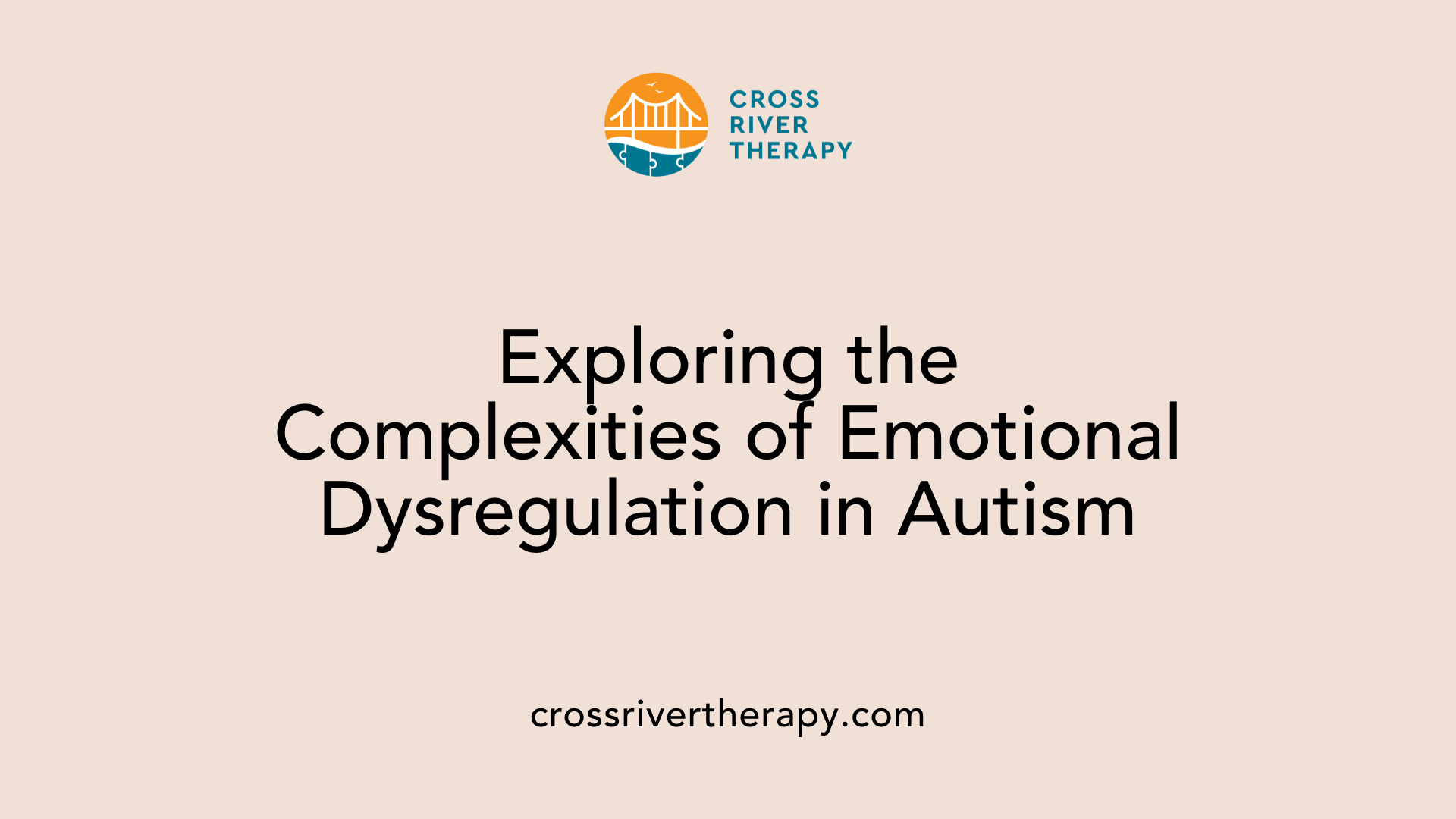
Characteristics of emotional dysregulation
Emotional dysregulation in children with autism often manifests in various ways, including meltdowns, tantrums, aggression, and even self-injurious behaviors. Signs of dysregulation can vary widely among individuals, with common indicators being increased self-stimulatory behaviors—such as flapping or pacing. Such behaviors may serve as self-soothing strategies that either seek sensory stimulation or withdraw from it, depending on the child’s emotional state.
Impact on social skills and behavioral problems
There is a notable connection between poor emotional regulation and behavioral issues in autistic children. Research has demonstrated that children with emotional dysregulation tend to exhibit significant challenges in social skills. For instance, a study involving 108 children showed that difficulties in managing emotions are closely linked to both increased behavioral problems and social communication challenges. Poor emotional regulation predicts worsening social skills over time, highlighting the importance of targeted interventions to help children improve their ability to cope with stress and frustration effectively.
Importance of emotion regulation
Effective emotional regulation is a crucial skill for children, particularly those on the autism spectrum. By learning to recognize and adapt their emotions in response to various situations, children can better engage in goal-directed activities despite experiencing negative emotions. Teaching strategies—like creating emotional levels charts and discussing coping mechanisms, such as deep breathing or asking for help—are essential in supporting autistic children to enhance their self-regulation skills. Overall, addressing emotional regulation is vital not only for improving individual behaviors but also for fostering better social integration and overall well-being in children with autism spectrum disorder.
How ABA Therapy Supports Emotional Regulation
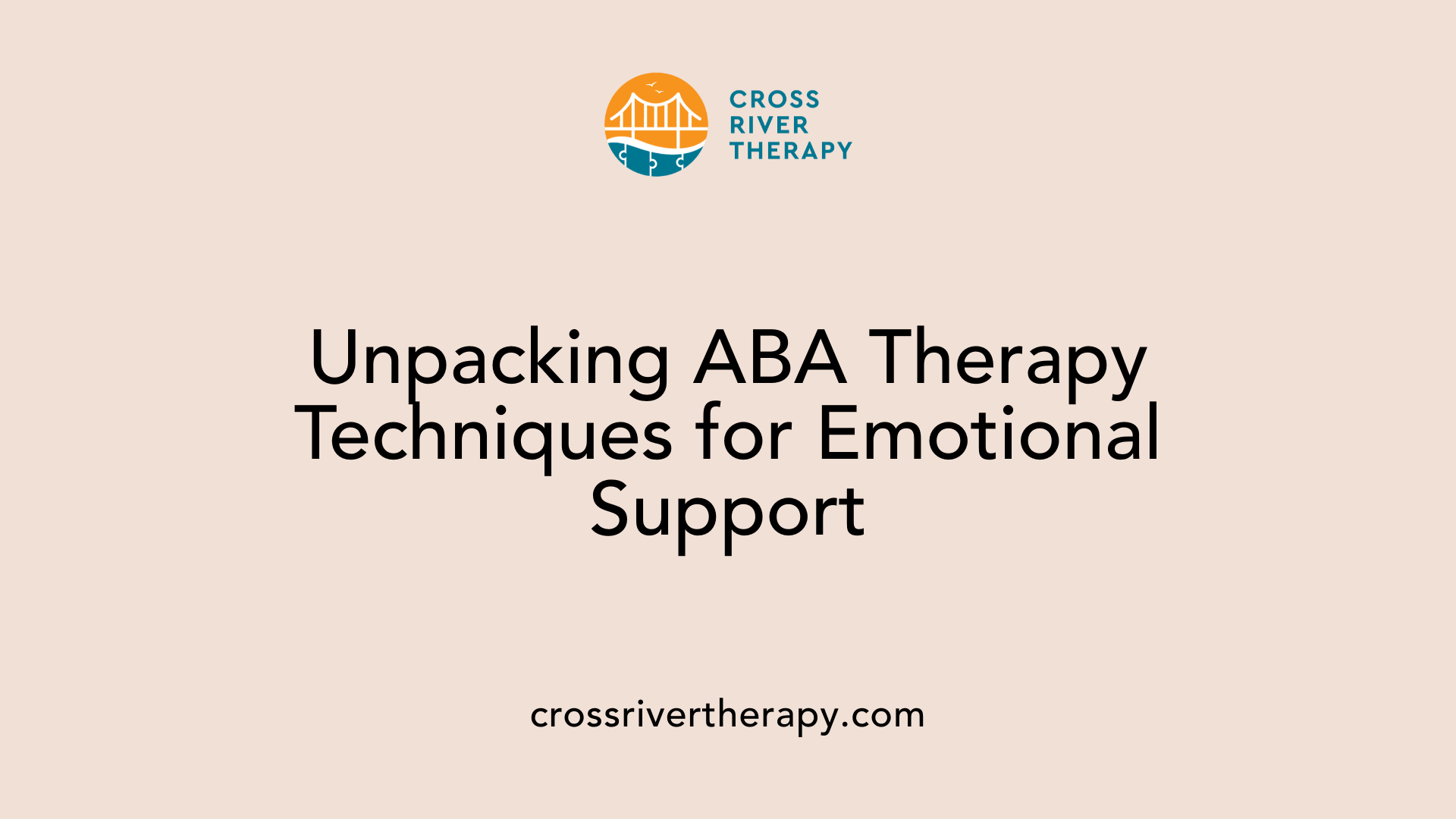
What strategies does ABA therapy use to support emotional regulation in children with autism?
ABA therapy employs various strategies tailored to the unique challenges faced by children with autism, especially regarding emotional regulation. Central to this approach is the teaching of prerequisite skills necessary for understanding and managing emotions effectively.
Focus on Communication and Self-Awareness
One significant aspect of ABA therapy is enhancing communication skills. Therapists utilize visual supports, such as photographs and visual charts like the Zones of Regulation, which help children identify and express their feelings accurately. This visual recognition aids in building emotional self-awareness, an essential foundation for effective emotional regulation.
Management Techniques
In addition, therapists model self-regulation behaviors, demonstrating how to cope with strong emotions. Techniques such as deep breathing exercises are taught to help children learn calming methods they can use during emotional distress. Role-playing and social skills training further support children in practicing appropriate emotional responses in various scenarios, reinforcing their ability to adapt their behavior in provocative situations.
Role of Positive Reinforcement
Positive reinforcement plays a crucial role in ABA therapy by encouraging the use of learned regulation strategies. By rewarding children when they successfully identify and manage their emotions, therapists reinforce these behaviors, leading to improved emotional expression and overall emotional management.
Overall, ABA therapy provides a structured and supportive environment that fosters emotional regulation skills in children with autism, equipping them with the tools needed for better emotional understanding and coping.
Evaluating the Effectiveness of ABA Therapy
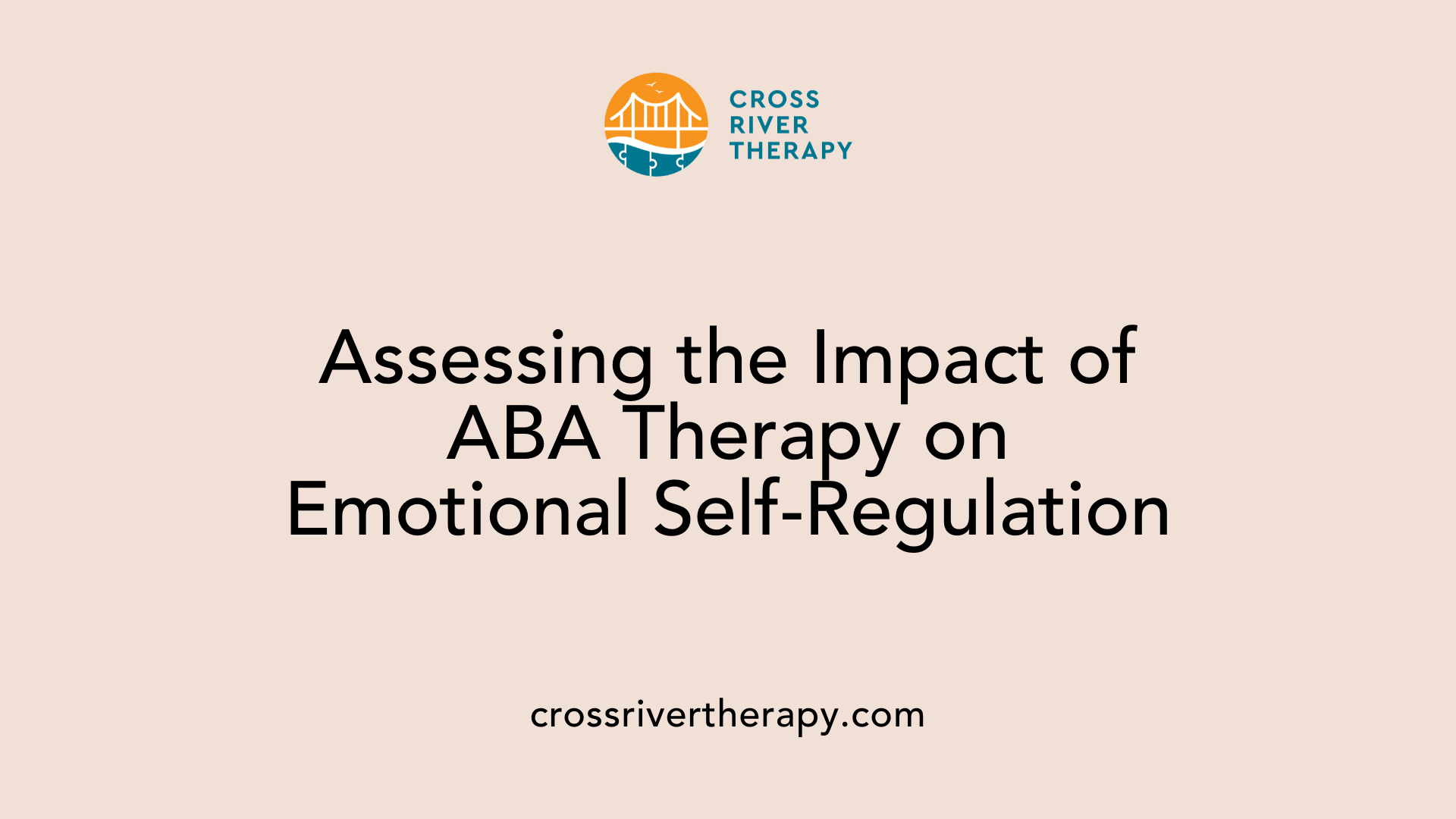
How effective is ABA therapy in improving emotional self-regulation skills among children with autism?
Research indicates that ABA therapy is effective in enhancing emotional self-regulation skills among children with autism. This structured and individualized intervention is designed to help children identify their emotional triggers and develop effective coping strategies.
Key Components of ABA Therapy:
- Structured Interventions: Tailored programs that focus on emotional recognition and management.
- Coping Strategies: Techniques like deep breathing and relaxation methods to deal with overwhelming emotions.
- Visual Aids and Social Stories: Tools to illustrate emotional concepts, aiding children in recognizing their feelings.
- Positive Reinforcement: Encourages desired behaviors by rewarding appropriate emotional responses, which helps bolster their emotional vocabulary.
As children engage in these various activities, they learn how to adapt their behaviors in challenging situations. This fosters not only emotional regulation but also enhances their social skills and emotional communication.
Supporting Social Skills and Emotional Communication
Through ABA therapy, autistic children can improve their social interactions by learning to express their emotions more clearly and appropriately. This involves practicing appropriate reactions to emotional challenges in a supportive environment, ultimately promoting their integration and well-being in social settings.
Overall, the combined efforts of ABA therapy can significantly improve both emotional regulation and social skills for children with autism, enhancing their ability to cope in various situations.
Unique Emotional Regulation Challenges in Autism
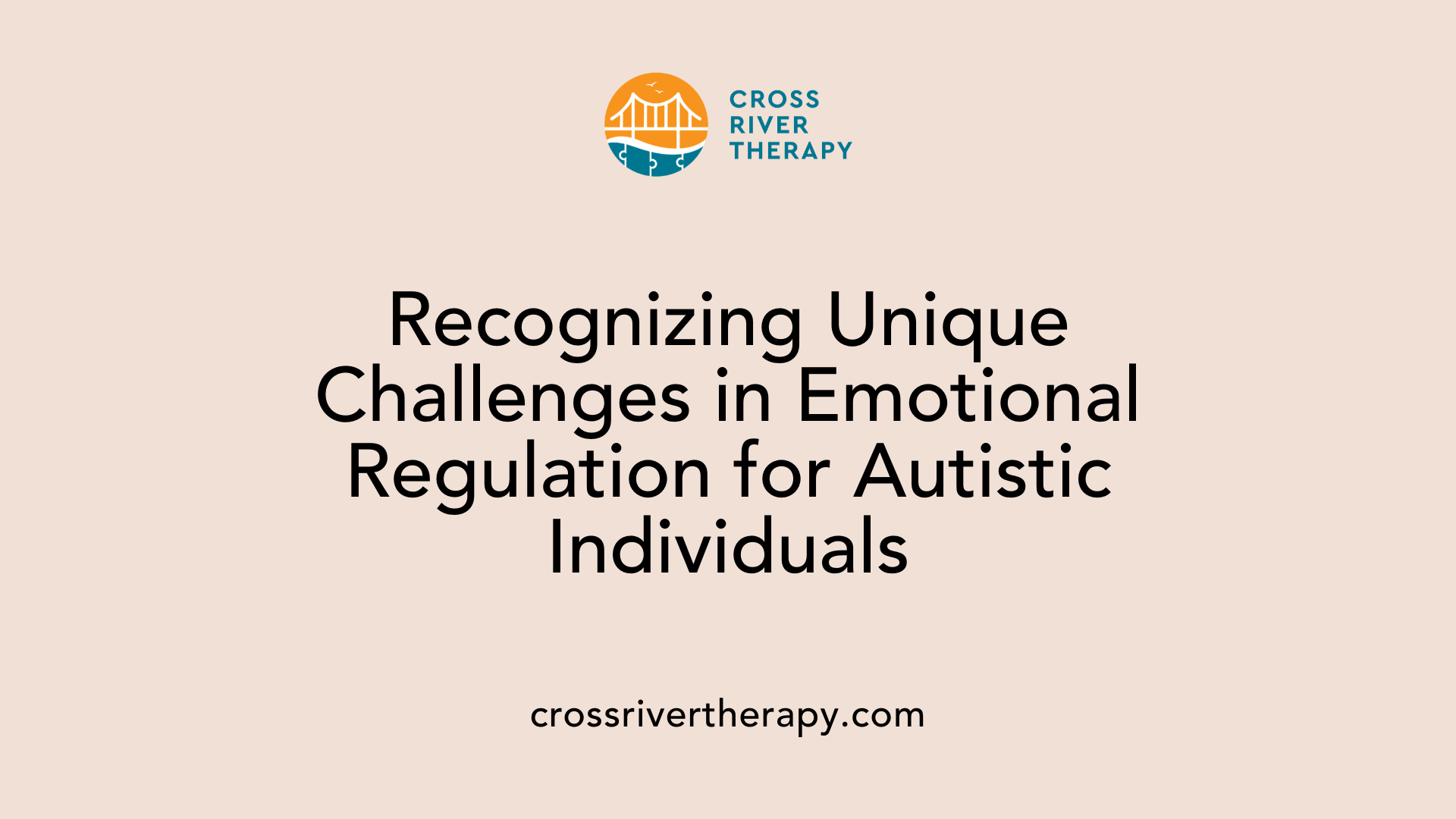
Self-Soothing Behaviors
Individuals with autism often use unique self-soothing strategies to help manage their intense emotions. These behaviors can vary widely, including increased self-stimulatory actions like flapping hands or pacing. Such behaviors can serve as an outlet for emotional distress and play a crucial role in emotional regulation.
Sensory-Seeking or Sensory-Avoidant Strategies
When it comes to coping with emotions, many individuals with autism may choose between sensory-seeking or sensory-avoidant strategies. Some may seek out stimulating environments, enjoying bright lights or loud noises, as a way to feel in control. Others might opt to withdraw from overwhelming stimuli to regain composure. Understanding these preferences is essential for providing appropriate support.
Challenges with Emotional Self-Awareness
For children with autism, identifying and understanding their emotions is often a significant hurdle. Without this fundamental emotional self-awareness, managing feelings can become even more difficult. Teaching emotional levels through charts or role-playing can help equip children with the skills they need to process their emotional reactions more effectively.
| Topic | Description | Examples of Strategies |
|---|---|---|
| Self-Soothing Behaviors | Actions taken to manage emotional distress. | Hand-flapping, pacing |
| Sensory Preferences | Choices between seeking sensory stimulation or avoiding it. | Bright lights vs. quiet spaces |
| Emotional Self-Awareness | Understanding one's own emotions to facilitate better regulation. | Emotional levels chart |
The Role of Emotional Awareness and Understanding
Identifying Emotions to Enhance Regulation
Emotional regulation begins with the ability to identify and understand emotions. For children with autism, recognizing feelings is often a challenge but is crucial for developing emotional self-awareness. Once a child understands what they are feeling—be it stress, anxiety, or frustration—they can begin to develop strategies to cope with these emotions effectively.
Teaching Methods for Emotional Self-Awareness
Several teaching methods prove effective in enhancing emotional self-regulation in autistic children. For instance, creating an emotional levels chart allows children to visualize their emotions and assign them to various situations. Through routine discussions on appropriate reactions to different emotional states, caregivers can reinforce adaptive responses. In addition, utilizing coping strategies such as deep breathing or role-playing can help children practice appropriate ways to handle emotional challenges.
Importance of Understanding Emotions
Understanding emotions not only empowers children with autism but also fosters their social skills and behavioral functioning. Research indicates that emotion dysregulation is closely linked to social challenges and can signal a need for targeted interventions. By cultivating emotional awareness, children with autism can achieve better emotional balance, leading to improved interactions with peers and minimized behavioral issues.
Community Support for Emotional Regulation
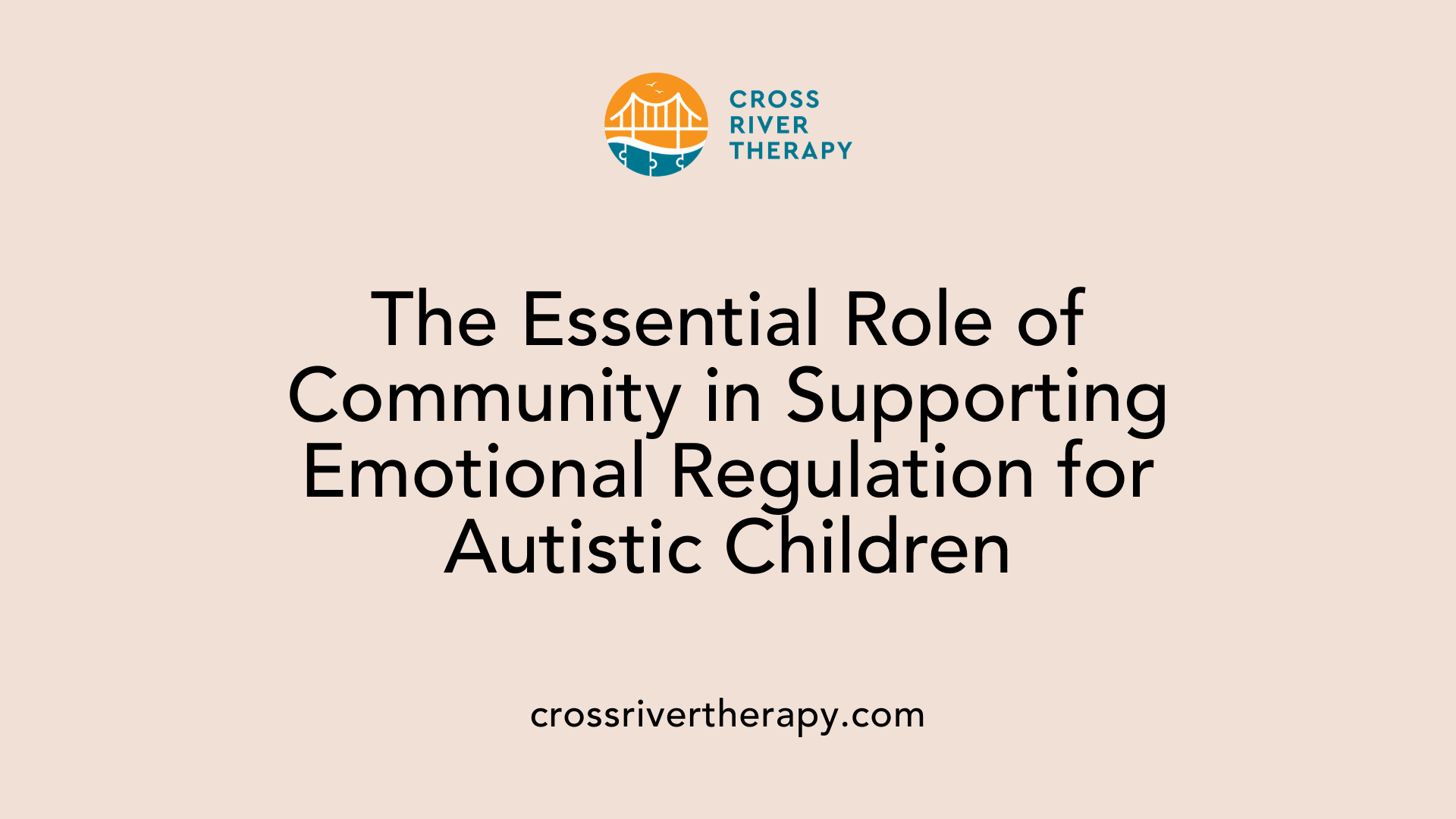
Role of community in supporting autistic children
Community involvement plays a crucial role in supporting autistic children, especially when they exhibit self-soothing behaviors. Providing an environment where these children feel understood and accepted allows them to manage their emotions more effectively.
Creating an understanding environment
An understanding community helps to normalize the diverse ways that autistic individuals cope with emotional challenges. Facilities such as schools, recreational centers, and family support groups can encourage empathy and patience among peers and caregivers, creating a nurturing space for emotional growth. When witnesses offer support without questioning the child’s behavior, it reduces stigma and promotes emotional well-being.
Avoiding misinterpretation of behaviors
It is important for community members to avoid misinterpreting behaviors associated with emotional dysregulation. For instance, behaviors such as flapping, pacing, or withdrawing may often be self-soothing strategies rather than indicators of misbehavior. Recognizing these actions as valid responses can foster a more supportive atmosphere, empowering children with autism to navigate their emotional landscapes with confidence.
Link Between Emotional Regulation and Social Development
Impact of emotional skills on social integration
Emotional regulation plays a vital role in social development, particularly for children with autism. These children often experience challenges in social skills and behavioral functioning, tied closely to their ability to regulate emotions effectively. When children with autism cultivate strong emotional regulation skills, they can better recognize their feelings and react appropriately to social cues.
Conversely, those who struggle with emotional dysregulation may face difficulties in social interactions. They are more likely to exhibit behaviors that lead to misunderstandings and isolation, such as meltdowns, which can alienate peers and limit social opportunities.
Interventions for enhancing social development
Targeted interventions can significantly enhance emotional regulation skills in children with autism. Approaches like Applied Behavior Analysis (ABA) therapy focus on teaching adaptive behaviors through positive reinforcement. Additionally, using strategies like emotional levels charts helps kids understand their feelings and develop appropriate responses to various social situations.
Incorporating coping strategies, such as deep breathing or role-playing different scenarios, helps guide children through emotional challenges and support their social integration.
Emotional dysregulation and social challenges
Emotional dysregulation manifests in numerous ways—tantrums, self-injurious behaviors, or aggressive outbursts—which directly impact a child's social experience. High levels of distress can lead to breakdowns in communication and social engagement.
Research indicates that emotional dysregulation is stable over time and predicts worsening social skills and increased behavioral problems. This relationship underscores the necessity for multi-faceted interventions that address both emotional skills and associated social challenges, leading to better overall outcomes for children with autism.
Research Insights on Emotional Regulation in Autism
Findings on Emotional Dysregulation
Emotional dysregulation is a prevalent challenge for children with Autism Spectrum Disorder (ASD). A study involving 108 children aged 4-7 revealed that emotion dysregulation can manifest as meltdowns, tantrums, or self-injury. Furthermore, poor emotional regulation correlates significantly with social skills deficits and behavioral issues, emphasizing its role in overall functioning. Children with ASD frequently experience greater difficulties in regulating their emotions compared to their neurotypical peers, underscoring the urgency for effective management strategies.
Child and Parental Factors Influencing Dysregulation
Research indicates that several factors contribute to emotion dysregulation in autistic children. These include communication challenges, social difficulties, and issues with executive functioning. Moreover, external influences, such as parental stress and mindful parenting practices, have been shown to play a critical role in a child's emotional stability. In particular, parent-reported difficulties in social communication, restricted interests, and repetitive behaviors emerged as predictors of emotional dysregulation.
Need for Targeted Interventions
Given the findings, targeted interventions focusing on emotional regulation skills are essential. Children with ASD demonstrate significant emotion dysregulation that is independent of their cognitive abilities, indicating that developing these skills early can promote better social integration over time. Interventions such as Applied Behavior Analysis (ABA) therapy are recommended for fostering adaptive behaviors and enhancing emotional self-regulation through structured, positive reinforcement techniques.
Coping Strategies for Emotional Management
Techniques for managing overwhelming emotions
Effective emotional management starts with understanding individual triggers. For children with autism, these triggers can be related to sensory overload or anxiety-inducing situations. To cope, various techniques can be employed:
- Deep Breathing: Encouraging children to take deep breaths can help calm their nervous system during moments of distress.
- Counting to 20: Giving children a simple counting task can provide a moment of pause and shift their focus away from overwhelming feelings.
- Asking for Help: Empowering children to seek support from adults or peers can facilitate a sense of security and community.
Importance of teaching coping strategies
Teaching coping strategies is crucial, as it equips children with the tools they need to navigate emotional challenges. When children can identify their emotional state and apply appropriate reactions, they are more likely to engage in goal-directed activities, even during difficult times.
Role of structured environments
Structured environments play a significant role in supporting emotional regulation. A predictable routine helps children anticipate events, reducing anxiety. Educators and caregivers should implement consistent practices and use visual aids like an emotional levels chart to assist children in recognizing their feelings and appropriate responses.
Multimethod Approaches to Study Emotional Regulation
Different Methodological Approaches
Understanding emotional regulation in children with autism necessitates a variety of methodological approaches. A multimethod strategy incorporates both observational assessments and parent-reported experiences. This combination enriches the study of emotional regulation by capturing the nuances of emotional responses in various contexts.
Comparisons of Parent-Reported vs Observed Behaviors
The differences between parent-reported emotional dysregulation and those observed directly are significant. For instance, parent reports can highlight issues like social communication difficulties and restricted interests associated with emotional outbursts, while observations may reveal different behavioral patterns, such as direct self-soothing strategies or emotional responses in social settings. This variance emphasizes the intricate relationship between what parents perceive and what happens during interactions.
Benefits of a Holistic Understanding
Utilizing a multimethod approach presents several benefits. It aids in forming a comprehensive picture of an autistic child’s emotional landscape, contributing to tailored intervention strategies. By integrating diverse insights, caregivers and therapists can better address specific needs and foster emotional regulation skills, ensuring more effective management of emotional challenges.
| Method Type | Insights Gained | Application |
|---|---|---|
| Observational | Direct behaviors in social contexts and emotional responses | Real-time strategy development |
| Parent-Reported | Personal experiences and perceptions of behavior | Targeted support for family dynamics |
| Multimethod | Comprehensive understanding of emotional regulation | Informed intervention planning and execution |
Predictors of Emotion Dysregulation in Autism
Child Characteristics Contributing to Dysregulation
Children with Autism Spectrum Disorder (ASD) often display unique characteristics that influence their emotional regulation. Two significant predictors are Restricted Interests and Repetitive Behaviors (RIRB) and inhibitory control difficulties. RIRB can lead to intense focus on preferred activities while simultaneously causing frustration when faced with changes. Inhibition control, which is the ability to suppress impulses and responses, can directly impact how children react emotionally in stressful situations.
Influence of Parental Factors
Parental influences also play a pivotal role in managing emotion dysregulation. Factors such as parental stress and mindful parenting significantly affect how children with autism navigate their emotions. Parents who are more stressed may struggle to offer the support their children need, leading to increased emotional outbursts or management issues in their children.
Formulating Targeted Strategies
To address these predictors, developing targeted strategies is essential. Interventions can include ABA therapy, which focuses on reinforcing positive behaviors and helping children engage with their emotions more effectively. Additionally, involving parents in training can reduce stress and foster a supportive environment that encourages emotional growth. By integrating these approaches, caregivers and educators can aid children in developing enduring emotional self-regulation skills.
Integrating Emotional Regulation Skills into Daily Life
Implementing Emotional Regulation Strategies in Everyday Settings
Integrating emotional regulation strategies into daily life can significantly benefit children with autism. These strategies can be practiced in various environments, including home, school, and social settings. For example, using an emotional levels chart can help children identify their feelings and determine appropriate responses to different situations. During stressful moments, caregivers can encourage children to utilize coping techniques such as deep breathing or counting backward to calm themselves.
Role of Caregivers and Educators
Caregivers and educators play a crucial role in teaching emotional regulation. They can model healthy emotional responses, create supportive environments for sharing feelings, and reinforce effective coping strategies. Regular discussions about emotions can promote emotional literacy, enabling children to better articulate their experiences. Moreover, structured interventions, such as Applied Behavior Analysis (ABA), provide frameworks for cultivating emotional regulation through positive reinforcement.
Benefits for Long-Term Development
The long-term benefits of incorporating emotion regulation skills into daily activities are vast. Children who can regulate their emotions are more likely to improve their social skills, decrease behavioral problems, and achieve better overall well-being. Enhanced emotional regulation leads to greater success in navigating social interactions and managing daily challenges, promoting a more fulfilling life experience in the community.
Moving Forward with Emotional Regulation in ABA
ABA therapy represents a promising approach in addressing the emotional regulation challenges faced by children with autism. By implementing structured, individualized strategies, ABA therapy not only improves self-regulation skills but also provides the tools necessary for better social and emotional functioning. Understanding the intricate connections between emotional regulation and behavioral problems highlights the urgent need for tailored interventions. As both research and practical applications continue to evolve, enhancing emotional regulation skills will remain a key focus for promoting the overall well-being and social integration of autistic children.
References
- Expert Q&A: Understanding autism emotional regulation
- (PDF) Emotion Regulation in Young Children with Autism Spectrum ...
- Navigating Emotional Dysregulation in Children with Autism
- Emotion dysregulation in children with autism - ScienceDirect.com
- How to Improve Emotional Self-Regulation Among Children with ...
- Simple evidence-based strategies for teaching emotion regulation?
- Managing Autism and Emotional Regulation | Level Ahead ABA
- Expert Q&A: Understanding autism emotional regulation
- 4 Ways To Help Your Child with Autism Self-Regulate



